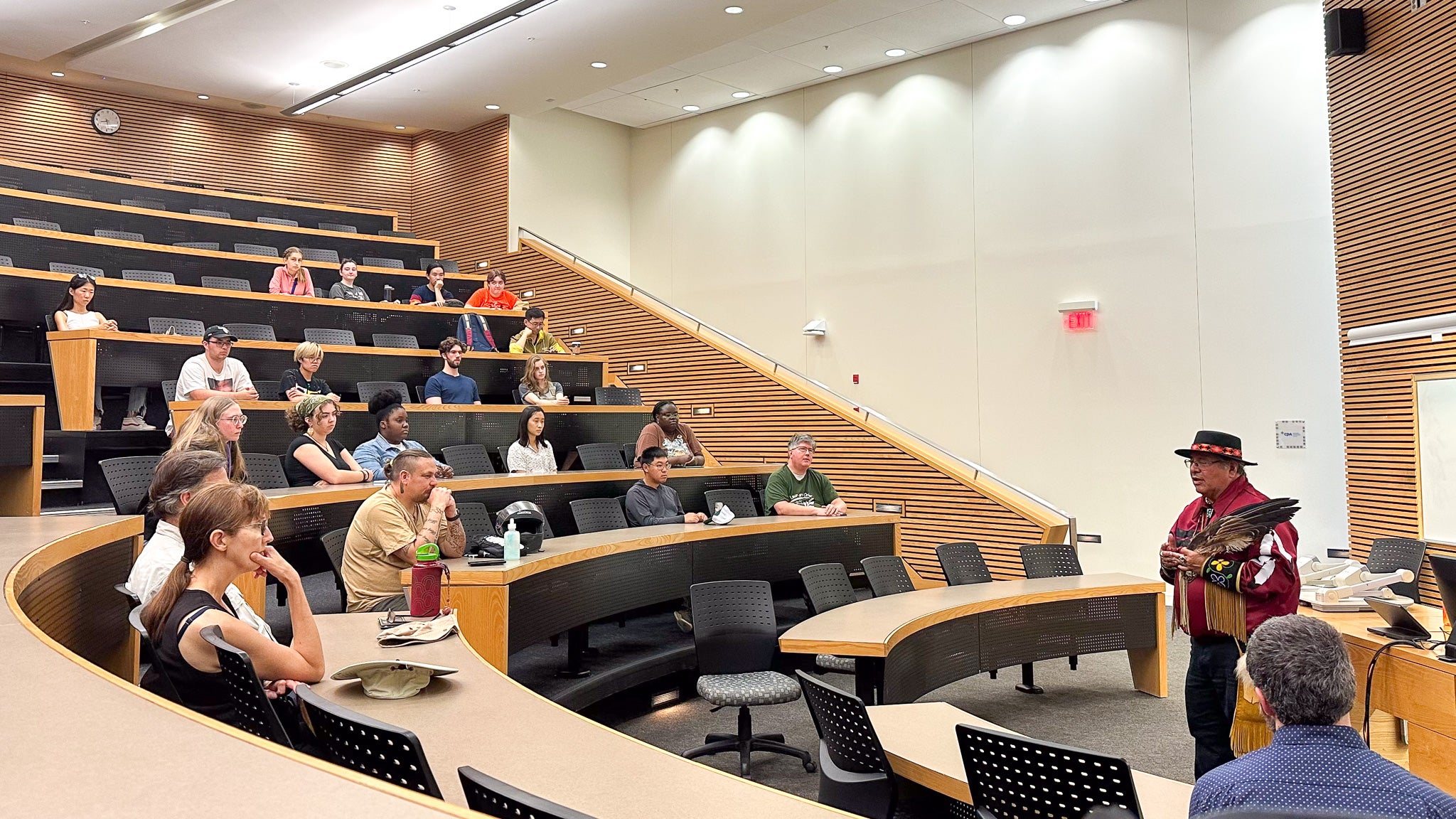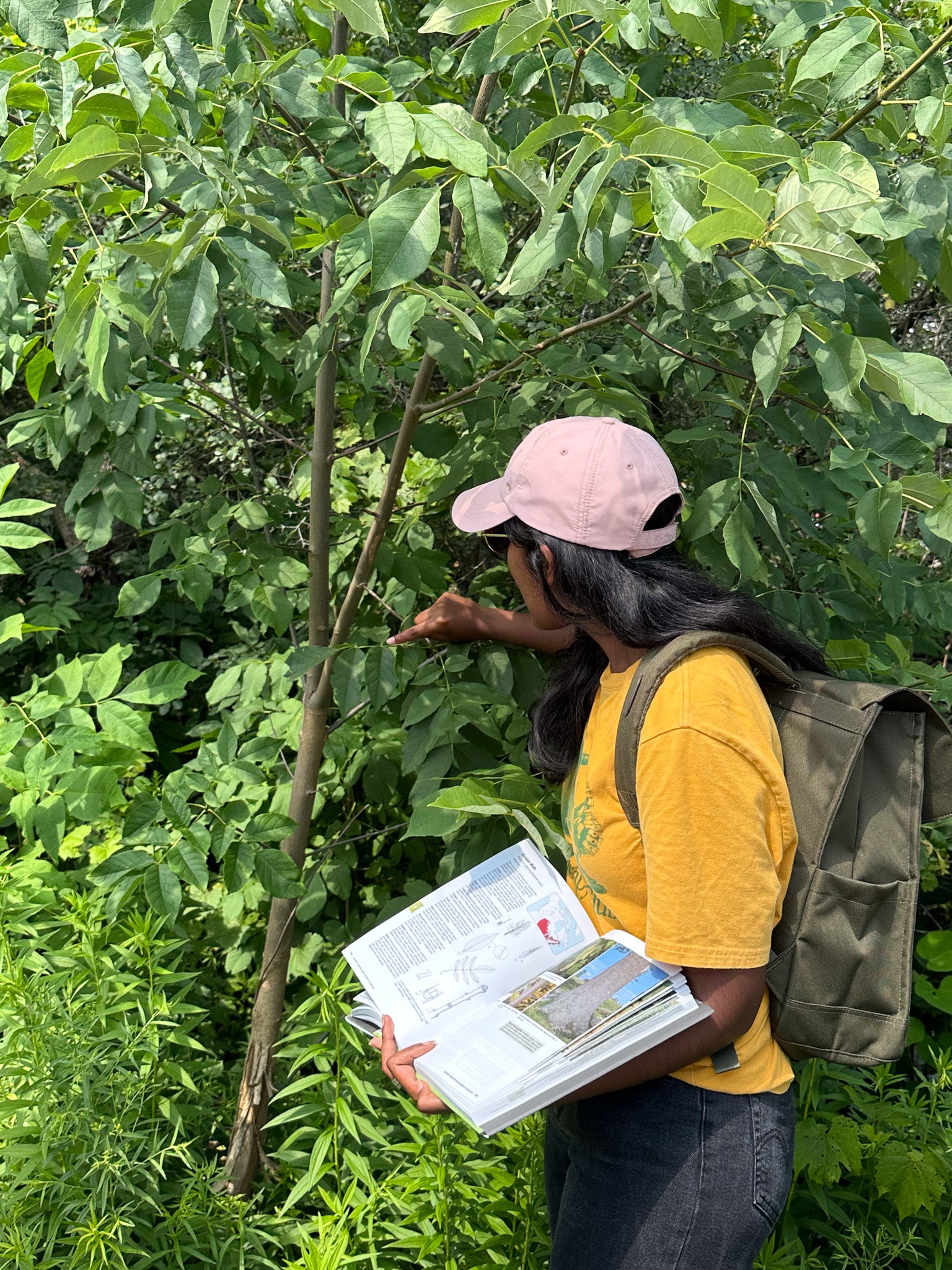This past weekend, the University of Waterloo hosted its first BioBlitz, where more than 100 Waterloo community members participated as citizen scientists to record various plant and animal species across main campus. Waterloo students, staff, faculty and alumni experts led guided hike sessions and provided tips on how we can protect the University's biodiversity.
After attending the first guided hike on plants, trees and butterflies, participants gathered in the Hagey Hall atrium for the opening ceremony led by Indigenous Knowledge Keeper, Elder Myeengun Henry, and Mat Thjissen, director of the Sustainability Office.
Elder Henry started the opening ceremony by acknowledging the fact that conducting a BioBlitz will require us to visit and respect the homes of trees, plants and animals across campus. He added that by identifying and recording all the different species, we are also identifying how we are going to be respectful towards these species, their land and how we take care of them.
"When we start to realize the importance [of different species], we have a whole different view of this land and how important it is for us to be more respectful," said Elder Henry. "This is why we are all hoping that through these types of activities, you're going to be able to see what's been affected by the things that we do as human beings, and so we can make those changes to improve life for all of us on the planet."

Elder Myeengun Henry leading the opening ceremony at the University of Waterloo's first BioBlitz.
Our shared sustainable future
In 2023, the QS World University Ranking recognized Waterloo as 36th in the world for their new ranking indicator on sustainability. Waterloo's environmental and social impact is a direct result of our commitment to sustainability and is outlined in the University's Environmental Sustainability Strategy.
As director of the Sustainability Office, Thjissen highlighted that Waterloo's commitment to sustainability includes working, learning and connecting with the Indigenous community. Thjissen expanded on the land acknowledgement by reminding attendees that we are not the only occupants of this land.
"In our many shared objectives, Indigenous communities are often on the frontlines of environmental challenges that we face today," said Thjissen. "They're also at the forefront of the solutions that we have to these crises, often bringing in the original stewards of the lands that we call home. And we have much to learn from traditional Indigenous knowledge and history for our collective sustainability."
Elder Henry shared with the audience on how Indigenous communities would hold Vision Quests - a series of ceremonies where Indigenous people would fast for four days, while staying in the ancestral territories that are home to deer and other animals. Indigenous communities would hold Vision Quests as an opportunity to learn about the animal life that coexists around us.
The Sustainability Office aims to implement a similar ceremony through the BioBlitz event. Where we can identify and learn about the various plant and animal species that live on the land and with support from the Indigenous community, we can build on our knowledge and put together plans that will protect and restore some of the areas on campus.
Waterloo experts lead citizen scientists on guided hikes
The National Geographic Society was one of the first organizations to adopt the BioBlitz method by hosting events across different U.S. National Parks each year. Now, institutions and organizations across Canada are encouraged to host their own BioBlitz and use the iNaturalist app on their mobile phones to collect data and biological information of species.
iNaturalist has become an open-source database used by scientists and policymakers around the world to manage data on the Earth's biodiversity. The University of Waterloo BioBlitz project can be viewed on the iNaturalist website, which provides an overview of all the observations and species recorded by Waterloo citizen scientists.








